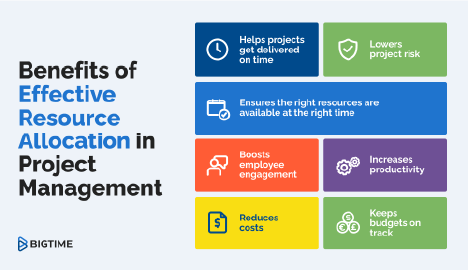Web Development Project Management: Ensuring Successful Deliveries
Developing the web is a very non-trivial activity that requires complex planning, precise work, and effective coordination. The discipline of project management is needed in this context because it forms the central element within any process for successfully providing web applications and websites on time without exceeding costs or compromising quality. In this article, we will explore the crucial areas of web development project management and take a look at how many methods are used in projects to make sure that they go smoothly.
Setting the Stage for Project Success
- Project Initiation and Definition
Josh Thill, Founder of Thrive Engine says, “On the road to web development, everything starts with a clearly defined initial phase. Building the goals, content, and limitations of the project is a process involving cooperation between all stakeholders. Critical decisions involve the project’s goals, who will be targeted by it, what its capabilities are to be, and how information technology should fit together as a whole. A project charter brings together all of these elements in the document that stays with a single product from beginning to end.”
- Assembling the Right Team
The make-up of the team must be suitable for this project. The most important is to build an integrated and professional group of project managers, designers, developers, and quality assurance specialists. The roles and responsibilities of all members must be clearly defined, so there will be clear expectations about contribution to one’s work team. To enable perfectly seamless interactions among members of the team wherever they may be physically, communication channels and tools for collaboration must be developed.
Choosing the Appropriate Project Management Methodology

Agile and client-centred Web development project management For instance, scrum or kanban are forms of agile techniques that have recently been marketed. Often called sprints, rapid prototyping divides up the work into a series of smaller units. Through these back-and-forth steps, teams can constantly seek feedback, grow in response to shifting demands, and deliver new chunks of functionality additive with each sprint.
- Waterfall Methodology
“This represents a different approach to project management than that used with the Waterfall technique, which is linear and sequential by nature. Under this approach, every phase of the project must be completed before continuing. Even though it’s not as flexible a methodology, Waterfall is still useful for projects with concrete requirements and few expected changes. Most significant is to choose the option that best suits both their needs and constraints.” explains Eran Mizrahi, CEO of Ingredient Brothers
Creating a Robust Project Plan
- Detailed Work Breakdown Structure
A comprehensive work breakdown structure (WBS), also referred to as a bill of operations is the foundation upon which any good project plan should be built. Breaking the scope down into smaller tasks also makes it easier to plan resources and timetables, as well as track progress. The WBS is like a blueprint that guides the team throughout all stages of the project and ensures that no important items are missed.
- Milestone Definition and Timeline Estimation
“Milestones are important checkpoints within a given project, points at which progress can be assessed and timetables met. In addition, accompanying deadlines should be clearly and concisely explained. Knowing how long to set the timetable will require rigorous estimation work that must take into account such factors as task complexity, resources available, and potential danger” says, Shannon Coventry, Marketing Manager at First Vehicle Leasing
Effective Resource Allocation and Management

- Resource Allocation
Resource distribution is the other two, meaning human resources allocation and planning for money (budget) as well as technological stack. The responsibility of the project managers is to make sure that all team members have everything they need, including tools and facilities for training.
- Risk Assessment and Mitigation
Mark McShane, Manager at CPR Training adds, “The process of determining the dangers and finding a strategy to deal with them is what separates sound from unsound project management. For other project managers, devastated before a single challenge has tackled them, similar problems can be avoided by actively identifying concerns and responding to them. monitoring and managing all internal and external factors that could impact the project is at the heart of risk management.
Continuous Monitoring and Adaptation
- Progress Tracking
Mark Buskuhl, Owner of NineBird Properties Denton, says “Making certain to continue monitoring all aspects of the milestones and timologies set is a key part of project management. It can be more conveniently done with various methods or tools for managing projects like Gantt charts which help one know what needs attention, monitor progress are relevant here.”
- Adaptation and Flexibility
Perhaps the most important characteristic of project management is adaptability to changing circumstances and unique needs. This is because agile techniques foster continual reassessment and adjustment of the project plans according to client feedback and increasing requirements. They push for continuous updates to the contents of a project,” explains Adam Crossling, Marketing & New Business Director at zenzero.
Quality Assurance and Testing

- Quality Control
Of paramount concern is that the quality of the final products be assured. Performing in-depth code reviews and design evaluations, as well as following correct coding practices are all examples of techniques included with quality control. It would be best to adopt quality assurance procedures as an integral part of the project’s life cycle so that any problems are discovered and remedied at a very early stage in development.
- User Testing
Tim Parker, Director at Syntax Integration says, “During the user testing stage, they analyze whether use and operation are easy; in other words, how well does a website or application match users ‘real needs? Users can give ideas on possible defects. The product development side then knows where to improve from the feedback given by real consumers utilizing what’s been developed.
Client Collaboration and Communication
- Transparent Communication
Communication with the client is one of the keys to good project management. If you maintain lines of clear and open exchange with clients, then not only can mutual trust be built up, but project objectives will also remain in line with client expectations. The communication process has numerous vital parts, says Cindi Keller, Head of Communications at THE CRIMINAL DEFENSE FIRM. Such as fixed reporting times each week and meeting with clients every couple of months?
- Client Involvement
It ensures that the customer ‘viewpoint is represented, and handles design issues by directly involving the client at every stage of a product’s life (especially during each Agile cycle), thereby ensuring they become part of development. Including customers in the process makes them feel they have a stake, and are thus naturally more satisfied.
Conclusion
Web development project management is a complex job that does not only call for technical know-how but also organisational skills and the ability to communicate. If the project managers follow these best practices, they can guide their teams toward delivering projects to success. What’s crucial is that it is determined to adapt these principles in just the right way for each project based on its particular needs and possibilities, regardless of whether you are using Agile or Waterfall methodology. If web development projects are conscientiously addressed at the beginning, when forming teams, in methodology selection, and while monitoring progress regularly, they can always meet, even exceed their clients ‘expectations. It is achieved through the creation of good websites and web applications on time and under budgetary limitations.



